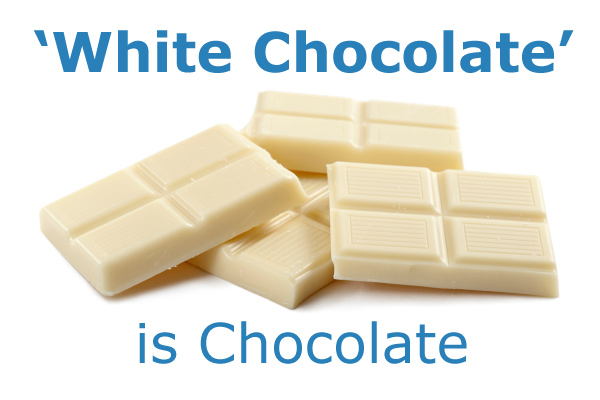Is ‘white chocolate’ actually chocolate?
There are several varieties of chocolate: milk, dark, semi-sweet, etc. But white chocolate is not on that list because it is missing one key ingredient: chocolate. Specifically, white chocolate (which is actually more of a yellow color if prepared properly) does not contain chocolate liquor or cocoa solids.
Chocolate is made from cocoa beans, which are the seeds of the cacao tree. The beans are fermented for several days, then dried, roasted and cracked open to remove their shells. The remaining “cocoa nibs” are ground into a paste and the fatty portion (cocoa butter) is removed with a hydraulic press. The nibs become chocolate liquor (and all of the chocolate varieties with which you are familiar). The cocoa butter, along with milk, sugar and flavorings is used to produce white chocolate.
Cocoa butter does not contain any of the ingredients associated with “brown” chocolate, such as caffeine and flavanol antioxidants. It also does not taste particularly good, so it is typically “deodorized” (aroma and flavor removed) and then sugar and flavors such as vanilla are added.
The exact origins of white chocolate are somewhat of a mystery. It is known that Nestle produced a white chocolate bar in Europe in the 1930s, probably as a way to get rid of the excess cocoa butter produced in their chocolate-making process. Nestle also introduced the first mass-market bar, Alpine White, in the United States around 1948.




